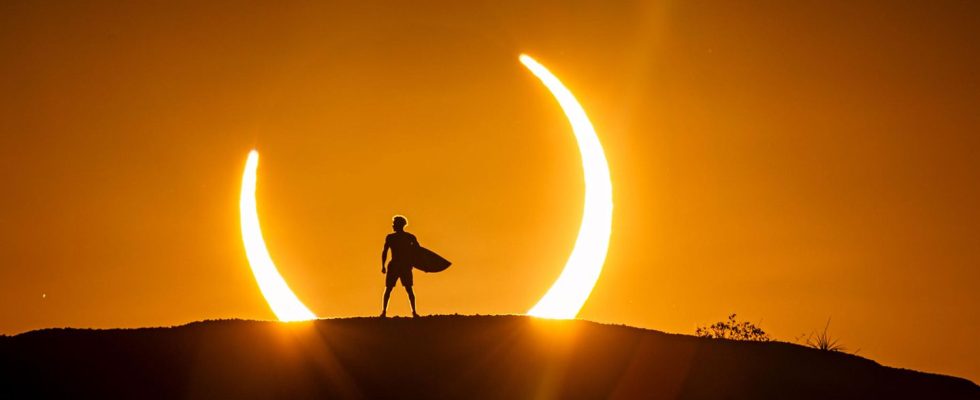“Total Eclipse of the Heart” is probably the best-known hit by British singer Bonnie Tyler. Eclipse is the English word for darkness – and is currently on everyone’s lips in the USA and Canada. Next Monday, April 8th, there will be a total solar eclipse that will be visible across much of Central and North America. The hype surrounding the event is correspondingly great.
8 pictures
Statistically speaking, a total solar eclipse in a particular location only occurs once every 375 years. If you include annular eclipses – where the moon does not completely cover the sun’s disk – they occur on average every 140 years. But not in all places people have to wait so long for such an event; in some places it occurs more frequently within a millennium. On others, not at all.
In contrast, a total lunar eclipse can be seen from all locations on Earth, so it occurs much more frequently than a total solar eclipse. Astronomers expect a total of 85 total lunar eclipses in the 21st century. Predicting lunar eclipses with spatial precision is one of the most difficult astronomical tasks because there are certain periodic fluctuations for all three celestial bodies involved, all of which are very difficult to calculate.

